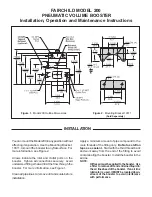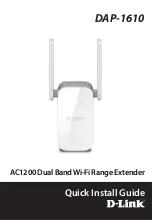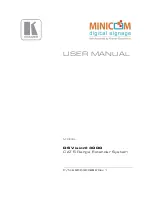
10
3.2 GROUNDING THE COPPERLINK ETHERNET EXTENDER
Before installing the CopperLink Ethernet Extender, it is important to
establish a good grounding connection first.
1. Assemble a ground wire using #10 AWG wire with green-and-yel-
low-colored insulation and two ring terminals. Make the wire long
enough to reach one of the following
earth
ground sources:
—
The building ground rod (generally located at the site’s main
service entrance)
—
A sprinkler system pipe
—
A metal cold-water pipe
—
Building structural steel
2. Install the grounding wire between the grounding stud (see Figure 2
on page 9) and the grounding source.
3.3 CONNECTING THE TWISTED-PAIR LINE INTERFACE
The CopperLink Ethernet Extender supports communication between
two peer Ethernet LAN sites over a distance of up to 6,000 ft (1.83 km)
over 24 AWG (0.5 mm) twisted-pair wire.
Note
Actual distance and link performance may vary depending on
the environment and type/gauge of wire used.
Follow the steps below to connect the CopperLink Ethernet Extenders
interfaces.
Note
The CopperLink units work in pairs. One of the CopperLink units
must be an L (local), and the other unit must be an R (remote). It
does not matter which end is the L and which is the R. The link
is always initiated by the R. As long as the L is powered on, the
R can establish a link by being powered on or by having its
power reset.
1. To function properly, the two CopperLink Ethernet Extenders must
be connected together using twisted-pair, unconditioned, dry, metal
wire, between 19 (0.9mm) and 26 AWG (0.4mm). Leased circuits
that run through signal equalization equipment are not acceptable.
2. The CopperLink Ethernet Extenders are equipped with an interface
jack that can be used on the CopperLink interface, an RJ-45 (2168A
or 2158A), or a terminal block (2168A/TB45, which also has the RJ-45
interface). These CopperLink interfaces are a two-wire interface.
Observe the signal/pin relationships on the CopperLink Ethernet
Extender's CopperLink interface jacks.











































